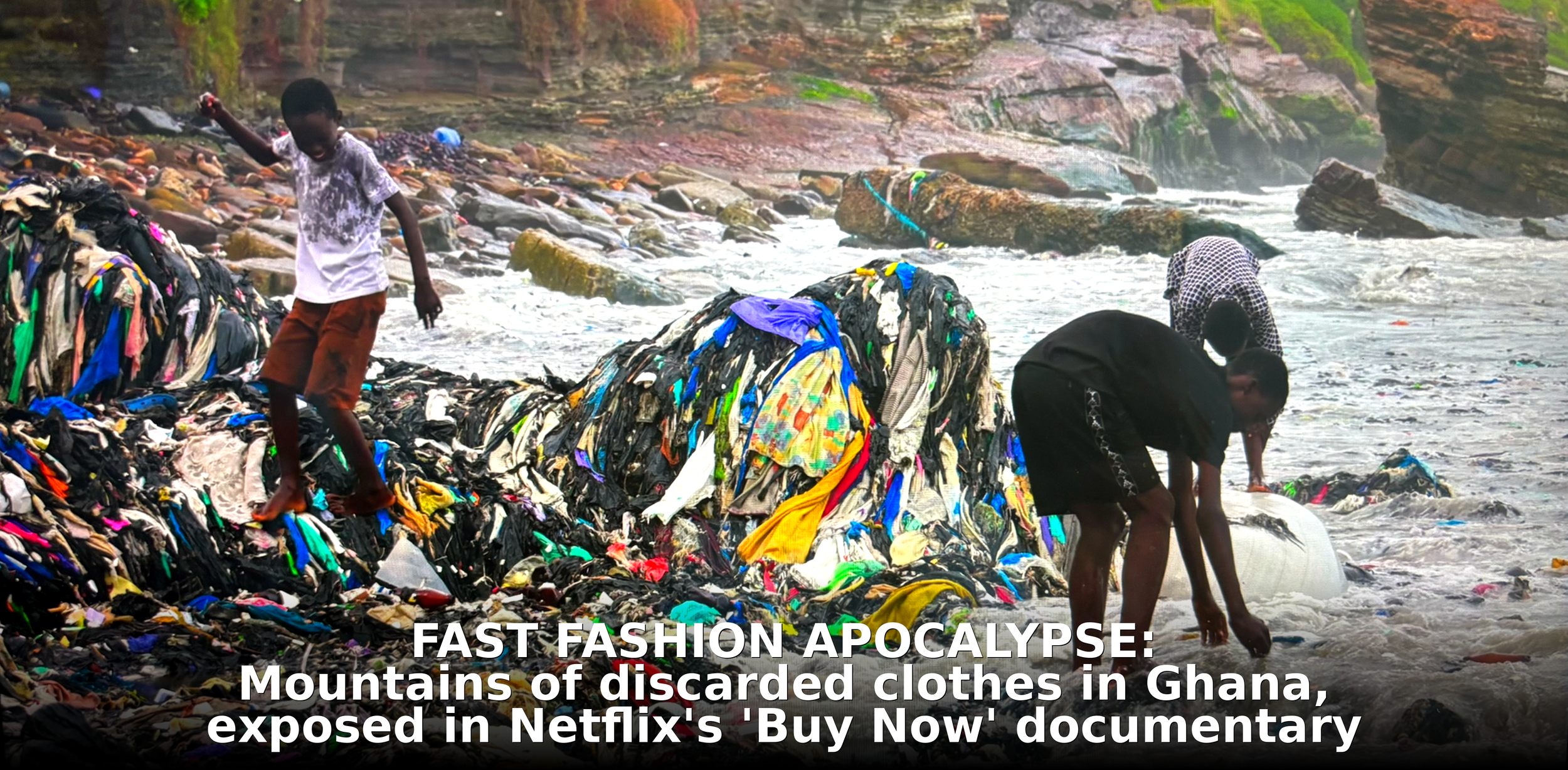Where Does Fashion Go to Die?
On a slow afternoon, I found myself doom-scrolling through social media. An influencer spun in a new dress, a catchy track playing in the background, and before I knew it my thumb hit “Shop this look”. One quick purchase later, a fresh outfit had arrived at my door. A few weeks (or even days) after that, it was buried in the back of my closet and destined for my next “spring cleaning” donation bag – with me feeling good that someone at least will enjoy this piece afterwards.
But where does it really go?
My Wake-Up Moment
The answer hit me hard after watching Netflix’s Buy Now. I couldn’t stop picturing mountains of unwanted clothes overflowing the shorelines and flooding the seas. Curious and unsettled, I dove back into old documentaries like The True Cost and scoured reports on textile dumping. What I discovered sent me around the world, to places where our cast-off garments become someone else’s burden.
A Global Tour of Textile Dumping Grounds
Fast fashion’s throwaway culture funnels millions of garments each year into a handful of regions that simply lack the infrastructure to deal with them:
🌍 Top Places Where Discarded Clothes Are Dumped
1. Chile (Atacama Desert)
The Atacama Desert has become an infamous textile graveyard. Roughly 39,000 tonnes of unsold fast fashion arrive annually in Iquique, only to be abandoned under the driest skies on Earth. These informal “landfills” leach dyes and microplastics, and every so often burst into toxic fires.
2. Ghana (Accra – Kantamanto Market)
West Africa’s largest secondhand clothing hub processes about 15 million garments each week — and discards up to 40% of them. The waste clogs streets, fuels roadside fires, and poisons beaches and oceans.
3. Kenya (Nairobi – Gikomba Market)
Like Accra, Nairobi’s bustling secondhand market sees huge volumes of low-quality imports (called mitumba). Anything unsellable ends up in piles that local authorities struggle to clear, creating health and environmental hazards.
4. India (Panipat, Delhi, Mumbai)
India plays a complex role, acting both as a processor and a destination for discarded clothes. In Panipat (known as the “cast-off capital”) old clothes become cheap blankets or fiber which could be a good form of recycling. However, countless lower-grade garments still end up in open dumps near Delhi and Mumbai.
5. Pakistan (Karachi, Lahore)
Pakistan imports large shipments of used clothing but lacks the capacity to sort or recycle it. Much of it is burned or forgotten in makeshift dumps.
6. Malaysia and the Philippines
Illegal shipments, often mislabeled as reusable, overwhelm local systems. When clothes can’t be resold, they’re incinerated or simply abandoned.
A Day in Kantamanto
To see the human side of this crisis, I watched ABC Foreign Correspondent’s YouTube feature, “Dead White Man’s Clothes,” which follows several players at Ghana’s Kantamanto Market. First there’s Asare Asamoah, a small‐time distributor who pays upfront for bales of roughly 200 second hand garments, never knowing what he’ll get. After hours of sorting out rips, stains, and mismatches, he often salvages only seven pieces that turn a profit. Then there are the door‐to‐door retailers, like the young mother I met on screen. She balances her baby on her back and a stack of heavy clothes on her head, trekking from house to house. By day’s end, her back is sore and her lungs burn from dust and smoke — but she’ll be back in those piles before sunrise because this work feeds her entire family. Apart from the unfair and dire working conditions for these people, they now know most of these imports arrive stained, torn, or simply unwearable, and soon enough they’re cast aside. Although Accra’s official landfill was built to last 15 years, it filled up in under five, so the overflow ends up in empty lots, illegal dumps and even the sea.
It’s Not Just Geography
Those mountains of cast-off clothes aren’t random, they’re symptoms of a global machine built on speed and disposability. Once your checkout screen turns green, brands wash their hands of responsibility, and your discarded dress becomes someone else’s problem. This relentless churn is fueled by consumptionism which is a mindset that trains us to treat durable items like clothes as if they were perishable products. In most categories, we accept that soap or shampoo runs out. In fashion, clever marketing convinces us that even high-quality garments expire after a season. By blurring that line, companies ensure we keep buying, discarding, and shipping waste off to far-flung dumping grounds.
Next, we’ll explore an alternative vision: a system designed to keep garments, and their value, in use for as long as possible. If you’ve ever wondered what “circular fashion” really means and why it matters, join me in the next article.
👉 Read Article 2: Beyond the Linear: Core Principles of Circular Fashion
And if you’re interested to learn more, check out the rest of the articles in this series:
👉 Read Article 3: Quick Wins for a Circular Wardrobe: Easy Steps You Can Take Today
👉 Read Article 4: Building a Truly Circular System: Systemic Shifts for Long-Term Impact
👉 Read Article 5: Circular Fashion for All: Luxury vs. Low-Cost
👉 Read Article 6: Looking into the Future: AI & Transparency
👉 Read Series Intro: From Fast Fashion’s Graveyard to a Circular Tomorrow: A Fast Fashion PM’s Wake-up Call



